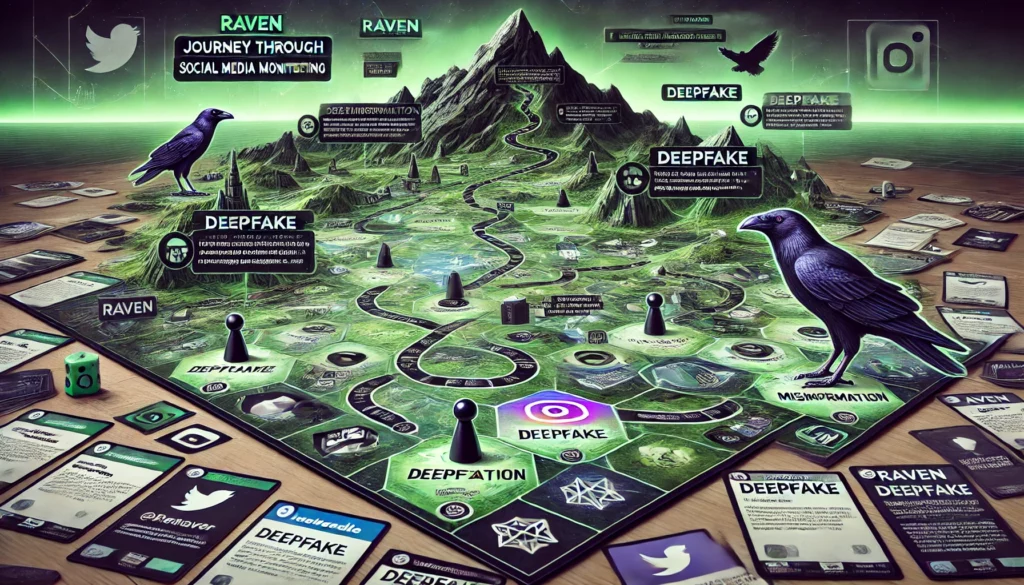What is Social Media Monitoring? A Comprehensive Guide

Social media platforms are hubs of global communication that influence purchasing decisions. Businesses can no longer afford to operate without understanding the pulse of their audience. Social media monitoring has become an essential strategy for brands, marketers, and organizations to stay connected with their audience, understand their market, and drive business success. According to a 2023 survey by Statista, 58% of US shoppers have purchased something after seeing it on social media and 71% of online users are more likely to make purchasing decisions based on social media reviews. There are countless examples of brands canceled by scandals spread more vigorously through social media. By investing in social media monitoring and narrative intelligence, organizations can get ahead of dangerous narratives.
But what exactly is social media monitoring? How does it differ from similar concepts like social media listening? And most importantly, why should you care? In this comprehensive guide, we’ll dive deep into the world of social media monitoring, exploring its importance, tools, best practices, and how it can drive your business forward.
Understanding Social Media Monitoring
Social media monitoring refers to the process of tracking and analyzing online conversations about your brand, industry, competitors, or any specific topic of interest. This practice involves using various tools and techniques to collect data from social media platforms, blogs, forums, news sites, and more, allowing businesses to gauge public sentiment, monitor brand mentions, and identify potential opportunities or threats.
At its core, social media monitoring is about keeping an ear to the ground in the digital world. It involves the continuous observation of various social media channels for any mention of your brand, competitors, products, or related keywords. By doing so, businesses can respond in real time to both positive and negative feedback, manage their online reputation, and make data-driven decisions.
Learn more: 12 Social Media Threats to Be Aware Of & How to Prevent Them
Key Objectives of Social Media Monitoring
1. Brand Reputation Management
Social media monitoring helps businesses maintain a positive image by allowing them to quickly address any negative comments or crises. By tracking brand mentions, companies can immediately respond to customer complaints, engage with positive feedback, and manage their online reputation effectively. With Blackbird.AI, marketers can gain context and clarity around harmful narrative attacks, harness AI-powered narrative discovery, uncover hidden threats and risks from hyper-agenda threat actors and bot manipulation, and enable rapid strategic decision-making.
2. Customer Engagement
Monitoring social media channels provides businesses with opportunities to engage with their audience in real time. Whether it’s responding to a tweet, commenting on a Facebook post, or acknowledging a brand mention on Instagram, social media monitoring helps foster stronger relationships with customers.
3. Competitor Analysis
Social media monitoring isn’t just about your brand; it’s also about understanding your competition. By tracking your competitors’ social media activities, you can gain insights into their strategies, identify gaps in the market, and stay ahead of industry trends.
4. Market Research
Social media is a treasure trove of information. Through monitoring, businesses can gather valuable data on customer preferences, emerging trends, and industry developments. This data can inform product development, marketing strategies, and overall business decisions.
5. Crisis Management
In the fast-paced world of social media, a crisis can erupt in minutes. Social media monitoring allows businesses to detect potential crises early, enabling them to respond quickly and mitigate damage. By staying alert to spikes in negative mentions or trending topics, companies can manage crises effectively. With Blackbird.AI, companies can understand the full scope of a threat, mitigate reputational damage, and foster trust with the Constellation Platform.
Social Media Monitoring vs. Social Media Listening
While social media monitoring and social media listening are often used interchangeably, they are distinct practices with different objectives and outcomes.
Social Media Monitoring is primarily focused on tracking and responding to specific mentions and keywords related to your brand. It’s a reactive process that deals with the immediate, day-to-day interactions on social media.
Social Media Listening, on the other hand, goes beyond mere tracking. It involves analyzing the broader conversations around your brand, industry, and competitors to gain deeper insights into customer sentiment, emerging trends, and the overall market landscape. Social media listening is more proactive, enabling businesses to make strategic decisions based on the insights gathered.
To put it simply, if social media monitoring is about “what” is being said, social media listening is about understanding “why” it is being said.
The Benefits of Social Media Monitoring
The importance of social media monitoring cannot be overstated. Here are some key benefits that highlight why every business should integrate social media monitoring into their digital strategy:
1. Real-Time Feedback
Social media monitoring provides businesses with immediate access to customer feedback. Whether it’s praise, criticism, or suggestions, this real-time feedback is invaluable for making quick adjustments and improvements to products or services.
2. Improved Customer Service
By monitoring social media channels, businesses can respond promptly to customer inquiries and issues, improving overall customer satisfaction. This level of responsiveness shows customers that their voices are heard and valued.
3. Enhanced Brand Awareness
Social media monitoring allows businesses to track brand mentions across various platforms, even in conversations where they may not be directly tagged. This helps increase brand visibility and awareness, as businesses can engage with a broader audience.
4. Informed Marketing Strategies
The data gathered from social media monitoring can inform marketing campaigns, content strategies, and overall business decisions. Understanding what resonates with your audience allows you to create more targeted and effective marketing efforts.
5. Competitor Insights
Monitoring your competitors’ social media activities provides valuable insights into their strategies, strengths, and weaknesses. This information can help you differentiate your brand and identify opportunities to capture a larger market share.
6. Crisis Prevention and Management
By detecting potential issues early through social media monitoring, businesses can prevent small problems from escalating into full-blown crises. Early intervention can save your brand from significant reputational damage.
7. Measurable ROI:
Social media monitoring tools often come with robust analytics features that allow businesses to track the performance of their social media efforts. This data helps measure the return on investment (ROI) of social media campaigns and justifies the resources allocated to social media management.
Best Practices for Social Media Monitoring
To get the most out of social media monitoring, it’s essential to follow best practices that ensure you’re gathering relevant data and using it effectively. Here are some tips to help you optimize your social media monitoring efforts:
1. Define Clear Objectives
Before diving into social media monitoring, it’s crucial to define what you hope to achieve. Whether it’s improving customer service, managing your brand’s reputation, or gaining insights into competitor strategies, having clear objectives will guide your monitoring efforts and ensure you’re tracking the right metrics.
2. Choose the Right Tools
With so many social media monitoring tools available, it’s important to choose one that aligns with your objectives and budget. Consider factors like the platforms you want to monitor, the level of automation you need, and the analytics features offered by the tool.
3. Monitor Relevant Keywords and Hashtags
Identify the most relevant keywords, hashtags, and phrases related to your brand, products, industry, and competitors. Regularly update these keywords to ensure you’re capturing the latest conversations and trends.
4. Set Up Alerts
Most social media monitoring tools allow you to set up alerts for specific keywords, mentions, or spikes in activity. These alerts ensure you stay informed about important conversations and can respond promptly to any issues.
5. Analyze Sentiment
Understanding the sentiment behind social media conversations is key to managing your brand’s reputation. Use sentiment analysis tools to gauge whether mentions are positive, negative, or neutral, and adjust your response strategies accordingly.
6. Engage with Your Audience
Social media monitoring is not just about observing—it’s about engaging. Respond to customer inquiries, thank users for positive mentions, and address negative feedback professionally. Engagement is crucial for building strong relationships with your audience.
Go Beyond Social Media Monitoring and Protect Your Organization with Narrative Intelligence
While social listening and monitoring are important in protecting your brand from false claims and bot attacks, narrative intelligence tools like Blackbird.AI help organizations eliminate narrative blind spots. You can analyze risks in text, images, and memes, so you have a full view into what people are saying about your brand. With Blackbird.AI you can see across the dark web, social media, news sites, and more. Track what people are saying around the globe with narrative intelligence across 25 native languages. Protect your brand and revenue against narrative attacks. Book a demo of Blackbird.AI today.
Kandace Miller •
Need help protecting your organization?
Book a demo today to learn more about Blackbird.AI.



